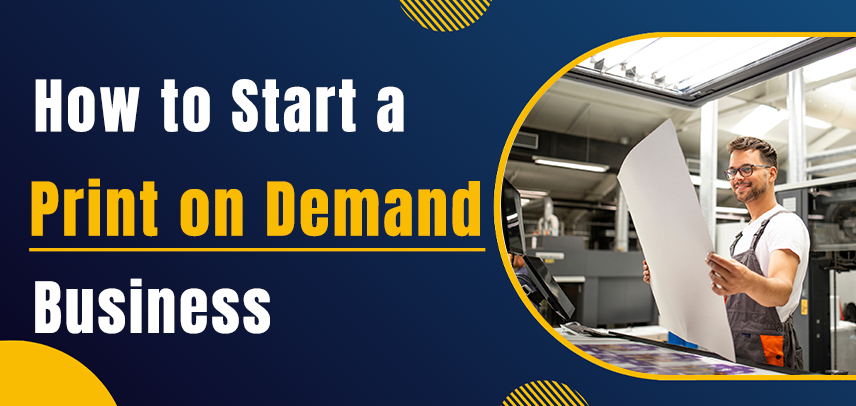
How to Start a Print on Demand Business Successfully in 2025
Your coffee mug collection is becoming too big for your kitchen cupboards. You enjoy collecting them, and it seems like you have mugs of every size and shade. But what if you could transform your love for mugs into a business? There is a simple method to achieve this goal – use print on demand services.
Are you starting to wonder, how to start a print on demand business? If so, the good news is that starting a print on demand business is simpler than you might think. Before we go into the details and actually start a print on demand business, let’s start with the basics and understand the POD business model.
What is Print on Demand Business Model?
When you hear the words customized mug business, what is it that comes to your mind first? Like probably boxes piled sky high of all the mugs in every single color and pattern imaginable, right? But what if you were able to run that business without turning your home into a storage unit? In print on demand business model, you can do just that.
No need to stock up or invest a huge start if you are using print on demand (POD). You work with a supplier who will print your designs onto things like mugs, t-shirts, and phone cases only when someone orders them. That way, you are able to state as many things for sale. It is quite simple as well; designing, arranging an online shop. After an order, the supplier will do all the printing to deliver it for your customer.
This is a model for beginner people that want to start selling products but still do not have the experience.
Is Print On Demand Profitable?
In short, print on demand is profitable — but a little complex, so here is the low down.
You opened your POD store, and a few orders are trickling in. Every time one of your designs is sold, you receive a small profit, which includes production and shipping costs. Sure, It isn’t the big money quick adder that some platforms are (it is a start), but you can never complain about free hustle.
With POD, the money is really in finding things that will resonate with your audience. When designs touch people emotionally, they are happy paying that little bit more. An alternative approach to achieve this is by inventing a new design or going towards a niche. This way, your designs will be as exclusive, and you can raise the price of your products. It will allow the sellers to earn higher profits.
Opening a shop, creating some unique designs and hoping for the best sounds easy, but it is more than that. As you must focus on marketing to attract visitors in order that they come visit and possibly shop from your store. The more people view your goods, the more likely they are to purchase.
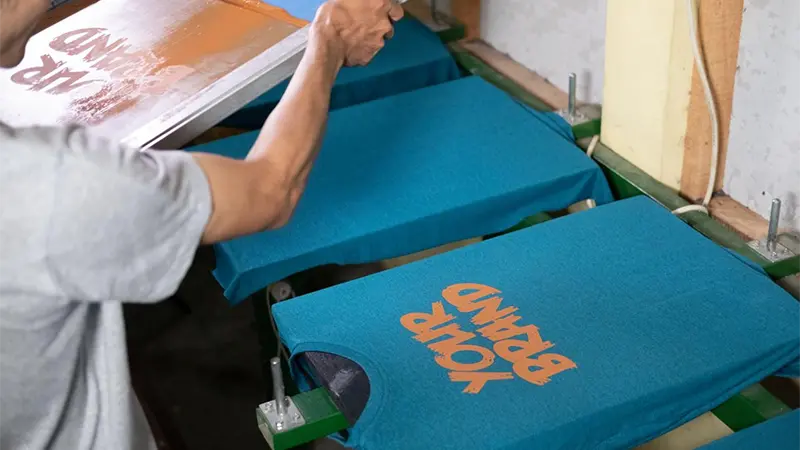
Pros and Cons of Print on Demand
The Perks of POD
- Less Investment Risk: You don’t have to stock up on a huge amount of products.
- Space for Trying Out: When one design does not pan out, no problem — you can try something new in minutes flat.
- No Shipping Problems: Shipping costs are one of the pitfalls, but with POD your print partner will take care of it for you.
Things to Keep in Mind
- Narrow Margins: As every piece is single manufactured, the price per item can be higher than for mass-produced items.
- Delivery Times May Be Compromised: Due to the location of your print partner, a delay in delivery times can result.
- Quality Not Your Control: You are not creating or repacking the items, so you have less of a say in how much quality goes into it.
8 Steps to Launch a Print on Demand Business
Find a Targeted Niche
It is important to focus on a niche you have interest in, but it should also be sellable.
Capitalize on Your Interests or Passion
Start with what you know and love. This not only makes the process more fun for you but also enables your audience to relate with you on a personal level.
Market Research
Dive into some research to see if your niche has a market. Google Trends and eRank can be handy tools for estimating the demand of your niche in a period. For updated news and viewpoints, visit Google News. Remember to look into marketplaces like Etsy and Amazon so you know what’s trending and gain business ideas.
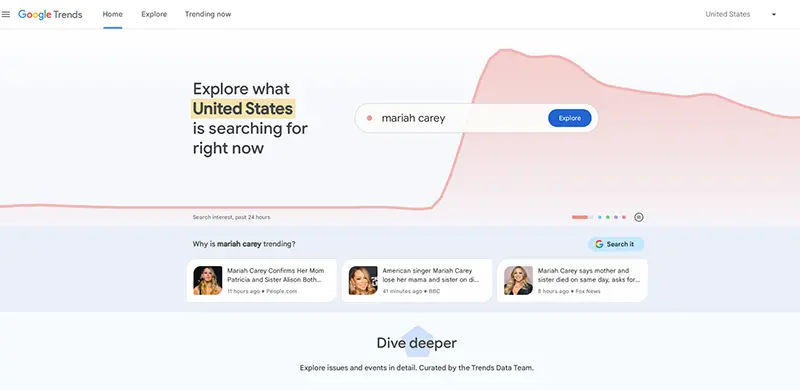
Stay Away from the Saturated Niches
While it might be tempting to jump into a popular niche, high demand often means high competition. Finding a less crowded space gives you a better chance to stand out.
Analyze Popular Trends
Keep your finger on the pulse of what’s trending. Social media platforms, forums, and communities can be goldmines for spotting new trends.
Know Your Competitors
Spend some time going over your competitors. Look at competitors’ ecommerce sales or product offerings. By knowing their strengths and weaknesses, it is easier to occupy a place within the market.
Decide What to Sell
Give preference to the products that will always be in demand throughout a year — these are also known as evergreen products. You will sell these items throughout any season so they generate more consistent sales for you.
Also, try to find products with a reasonable markup — typically around 30%. This provides you a wiggle room to pay costs, run promos and still make an excellent profit.
But do remember that your niche should define what product you choose to go with and not just the designs you put on them. If you are in the eco-friendly living niche, then products like reusable tote bags or sustainable phone cases would be best.
Using platforms like Inkedjoy makes it easier to try out a range of products. They sell a range of products that you can customize with your designs.
Popular Print-On-Demand Products to Consider:
Some items have proven to be consistent best-sellers, making them great options for your store. Here’s a breakdown of a few favorites.
- T-Shirts: T-shirts are simply the most popular product in the world of POD, and nothing sells like them! They are also a year-round wearable product, which means that they never get out of fashion.
- Mugs: Mugs are great for gifts from the heart or to lift someone’s morning. It also has the added benefit of being inexpensive, so they are an easy add on sell.
- Wall Art: Wall art can be the perfect type of product for your print on demand (POD) business, especially if you work on more artistic designs.
- Tote Bags: Functional tote bags that can double as a classy way to flash your designs around the world. They are geared as environmentally friendly substitutions for the plastic bag.
- Hats: Customized hats are perfect for any sports fan, outdoorsman or someone who just enjoys a quality accessory.
- Phone Cases: Phone cases are another item that is always going to be in demand in today’s technology-driven world. People love adding some spice to their phones and customizing them to reflect their personalities.
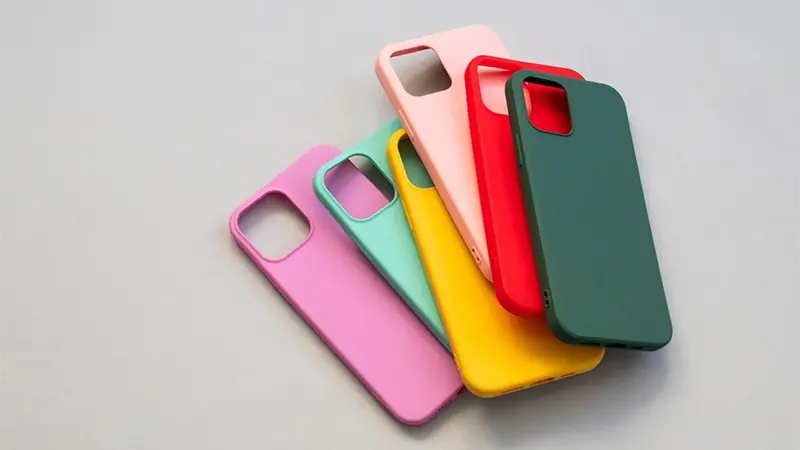
Create Unique Designs
Unique and eye-catching designs will make your products stand out from the competition.
Fortunately, you don’t have to be a pro artist. There are tools that help in creating designs easily, such as Canva, DesignWizard, and Piktochart. The platforms provide templates, graphics, and simple editors that assist in materializing your design ideas.
It is important to test-run your ideas before you commit to a design. Show your designs to all friends or family members. Or you can even leave a post on social media and see who likes it to refine your designs before they go live.
You should also regularly update your store with new designs. Updating your product line gives customers the impression that you are still engaged and committed to your brand.
What if You’re Not a Designer?
Even if you’re struggling with the modern design platforms, there are plenty of resources out there to help you. You can either use pre-made designs sold on marketplaces or collaborate with a professional designer. Services like Fiverr, Upwork, Dribble, and Freelancer are excellent sources to find designers.
If you are on a small budget or in a hurry, do consider AI designer. It won’t be as individualized, but they can serve as a starting point or inspiration.
Where to Find Design Inspiration
As long as you know where to find print on demand ideas, inspiration can come from anywhere. Selling on online marketplaces like Amazon, Etsy, and eBay can be a good way to identify trends that you see consumers asking.
Instagram, Facebook, and Pinterest also serve as rich sources of design inspiration to keep on top of the latest trends.
Websites like Dribble, AIGA Eye on Design, and Behance provide more professional inspiration to help you see what some of the best designers are doing.

Copyright Issues
It is important to bear copyright issues in mind when designing or working with designs. It is very tempting to take inspiration from existing designs. But you must remember to add your own spin to it to avoid any copyright infringements.
If your design features a phrase or quote — be sure to verify that it is not trademarked. A little bit of homework on your part can save you loads of legal trouble in the future.
Starting Your Online Store
With the products and designs covered, it’s now time to focus on getting your print on demand online store up and running. There are different places where you can set up shop, and each have its own relative advantage.
Ecommerce Platforms
An ecommerce platform is a software solution that gives you the ability to create and manage your online store. It provides everything you need to sell products online, from website design tools to shopping cart functionalities and payment processing.
A few popular platforms like Shopify, Squarespace, BigCommerce, and WooCommerce provide user-friendly tools for store customization. These tools ensure that anyone can start building an online store. These platforms offer plugins and integrations to help you modify the store according to your preferences.
An e-commerce platform basically lets you build your own standalone website. This means you have full control over every aspect of your store. But all that control has a price: the setup process can be more complex, and it does take some work to get everything squared away.
However, the result is a store that perfectly represents your brand and offers the flexibility to scale up in line with your business growth.
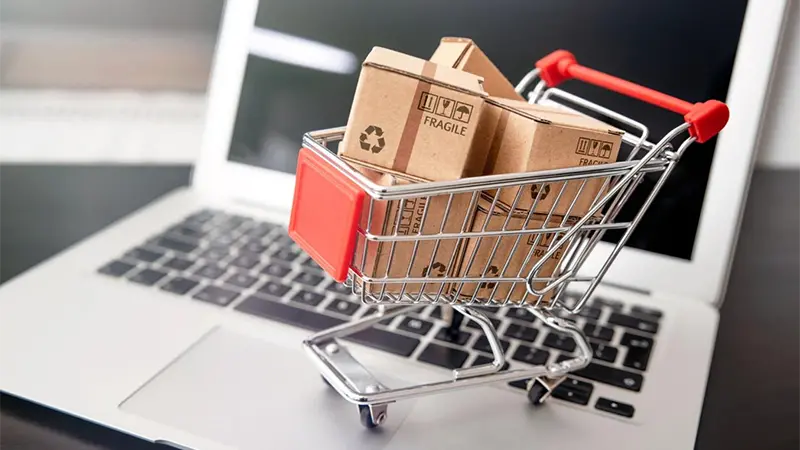
Ecommerce Marketplaces
An ecommerce marketplace, is a website where third parties list their products for sale. Think of platforms like Amazon, Etsyand eBay. These platforms provide traffic, and are generally much easier to start if you were going to set up an individual store.
However, you will not be able to align your branding or customer experience as thoroughly, but the speed of going live and possibility for mass impact can outweigh these drawbacks.
Inkedjoy works great with Shopify, Etsy, and WooCommerce. You can automate your order and inventory management tasks using this integration.
Pro Tip for Beginners: Etsy is a great platform for beginners starting on the budget side. It is also less expensive and risky than building your own website. It is the best way to dip your toes in the water and learn the tricks of trade before you commit to something more complex.
Choose Reliable Print on Demand Suppliers
Choosing the right print on demand supplier is crucial for your business to prosper. Here are a few things to consider when choosing a supplier:
- Product Quality and Diversity: The quality of the product provided by your supplier is a direct reflection on your brand. Customers need prints of high quality that do not fade or wear down. You must search for suppliers with an array of apparel, accessories, and home decor products.
- Price: Pricing directly influences your profit margins. Compare the base costs of products from different suppliers. You must also factor in all fees, such as shipping and customization costs to charge competitive prices and also make a profit. Remember, do not let low prices be your only driver.
- Shipping: Fast and reliable shipping is essential for customer satisfaction. Delayed shipments or mishandling of delivered packages may lead to negative experiences and little to no business customers in the future.
- Customer Service: Responsive and helpful customer service is essential, especially when issues arise. Print on demand companies with strong customer support can save your time and stress, whether it’s handling a product defect, tracking an order, or resolving any other issues that may occur.
- Location: The location of your supplier’s fulfillment centers affects shipping times and costs. Choosing a supplier with fulfillment centers close to your target market can speed up delivery times and lower shipping costs, enhancing the overall customer experience.
- Integration: Make sure your supplier integrates seamlessly with your ecommerce platform or marketplace. Look for suppliers that offer easy-to-use integrations with the platforms you plan to use.
5 Best Print on Demand Suppliers to Consider:
Inkedjoy
Inkedjoy is a premium POD supplier known for its high-quality products and exceptional customer service. They have a whole range of customizable products to sell—from clothing all the way to home decor and more—that means there is something for every niche.
Inkedjoy also stands out with its smooth integration with popular platforms like Shopify, Etsy, and WooCommerce, making it easy to manage your orders. The platform is ideal for businesses that need consistent delivery of quality and attention to accuracy in their shipping.

Printful
Printful is a well-established POD with a wide range of products from clothing, accessories to home decor as products. They are famous for their amazing print quality and swift shipping, which has made them the favorite choice of most online sellers.
Printify
Another great choice is Printify, which provides a large inventory of products from several vendors. This print on demand company gives you the freedom to find the best products and prices for your store; while guaranteeing hassle-free fulfillment.
Gelato
Gelato operates globally, with production facilities in over 30 countries. This massive network leads to faster shipping times and reduced costs, especially for international orders.
CustomCat
CustomCat is known for its extensive product catalog and competitive pricing. They offer fast turnaround times and a user-friendly interface, making them a solid choice for both beginners and experienced sellers.
Pro Tips: You should always order samples from your suppliers before listing the products on your store. This lets you test the quality of your own product and gain firsthand experience to ensure your customer’s need is met.
Manage Product Listings
Creating compelling product listings is essential for attracting customers and boosting sales. Here are key elements to focus on when managing your listings:
Product Photos
High-quality and high-resolution photos are crucial. They’re often the first thing customers notice, so make them count.
Consider using lifestyle photos rather than plain white backgrounds. Showing your products in real-life settings helps customers visualize how they might use them.
However, be mindful of using too many colors or variations—this can overwhelm shoppers and make it harder for them to decide.
Format and Fit
Ensure that your designs fit the products perfectly. The way a graphic looks on a t-shirt may differ from how it appears on a mug. Take the time to adjust your designs so that they complement each product type. This detailed attention can make a significant difference in how your listings are perceived.
Product Descriptions
Write detailed and engaging descriptions for each product. Highlight the key features, materials, and any unique aspects that set your products apart. Including related keywords naturally in your descriptions can also improve your listings’ visibility in search results.
Mockup Tools
Use mockup tools to create professional-looking product images. Tools like Smartmockups, Styria Shirts, Placeit make it easy to visualize how your designs will look on various products. These tools can save your time and help you create consistent, high-quality visuals for your store.
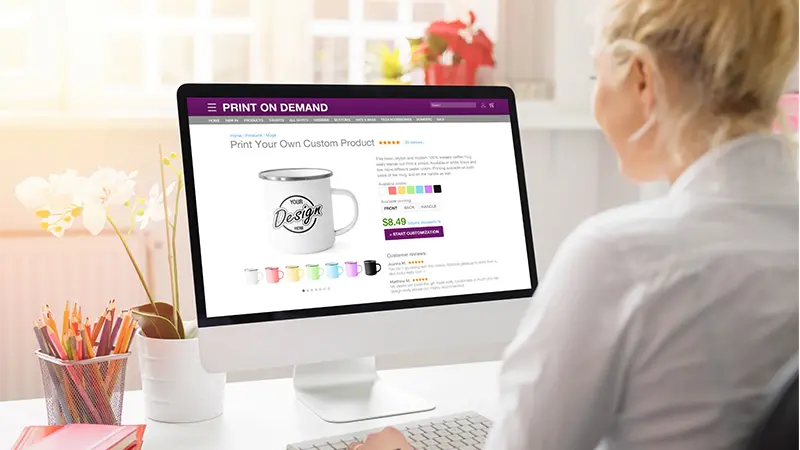
Set Pricing Strategy
The best place to start is by looking at the margin that you want to achieve. Make sure your prices reflect the quality of what you offer. Even where you position your brand in terms of price can be a key factor to impact how customers think about what they are acquiring.
You also need to research your competition. Look at what others are charging in your industry and how you can set yourself apart from the competition.
Also, be aware of the shipping costs because they can also vary drastically and affect your price by a lot. It is important to be transparent and let the customers know the costs beforehand rather than springing additional costs after they finalize their order.
Make a Marketing Plan
Building a good marketing strategy will be the most important thing to make your print on demand store take off.
First things is building your brand identity, including the message you want to tell and how it benefits others. Having consistency in these areas is what creates a brand that people can identify and trust.
Social media is a great tool to advertise your products. Maintain your followers intrigued and supplied with regular posts of new patterns or merchandise. Social media also gives you the opportunity to communicate with your customers directly and helps develop a community around your brand.
Email marketing is also a very effective technique. This way, you can send newsletters to keep your audience up-to-date with your brand and news related; also as a marketing strategy, by sending product updates or personalized offers that motivate them into buying again.
You can also focus on viral videos. Collaborating with influencers who align with your niche can be a way to extend the reach and awareness of what you are selling customized products among new audiences.
Start Print on Demand Business with Inkedjoy
Whether you are a beginner in POD or an experienced entrepreneur, it is wise to get started with Inkedjoy. This platform integrates with popular eCommerce platforms such as Shopify, Etsy, and WooCommerce to enable easy in-store set-up and fulfillment management.
With their vast selection of products, you can make completely customized items using a simple-to-use mockup generator that will help your designs pop.
With dependable customer service, competitive pricing, free to use, and lightening-fast shipping, Inkedjoy has everything you need when starting a print on demand business.
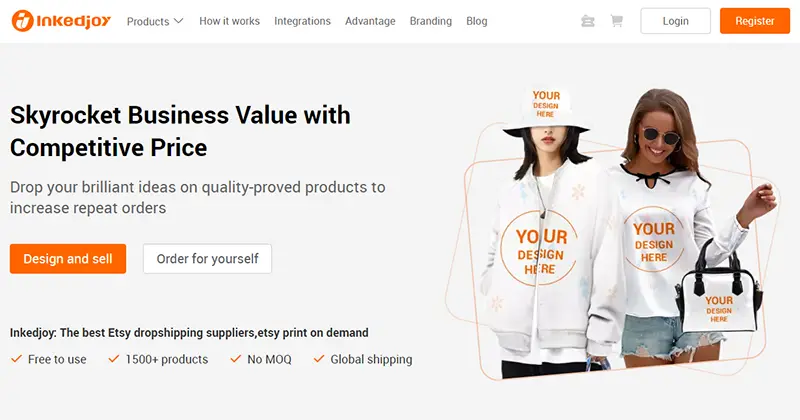
Wrap Up
Starting a print-on-demand business can be an exciting way to turn your ideas into reality without a hefty upfront investment. By following the outlined steps—finding your niche, setting up your online store, and choosing reliable suppliers—you’re setting yourself up for success.
Remember, it’s crucial to stay adaptable and keep refining your approach as you learn more about what works best for your audience. With the right tools and strategies, you can build a thriving business and bring your unique designs to a wider market.
FAQs
What are the shipping costs for print on demand?
Shipping costs for print-on-demand services vary based on the supplier, product type, and delivery location. Typically, you’ll see costs included in the product price or charged separately. It’s important to review each supplier’s shipping policies to understand how they impact your overall expenses.
Can I start a print-on-demand business without money?
Yes, starting a print-on-demand business with little to no money is possible. Many platforms allow you to start with no upfront costs. Focus on using free or low-cost tools and begin with a marketplace like Etsy, which requires less financial commitment compared to building a standalone website.
How much does it cost to start a print on demand business?
The cost to start a print-on-demand business can be minimal. It often includes fees for setting up your online store and marketing. Many print-on-demand platforms offer free or low-cost plans, so your primary expenses may be for designing and promoting your products.



